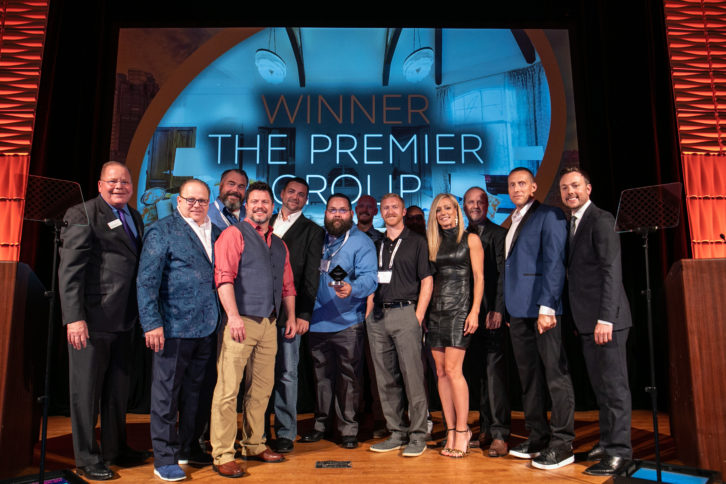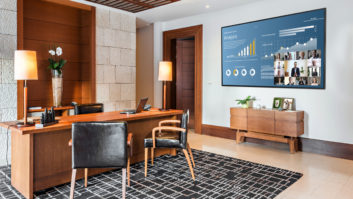For Nic Black, managing director of the U.K.’s Pyramid Group, winning a CEDIA Award means quite a bit more than a pretty piece of hardware — for Black and his firm, it means more high-end business.
“When we won our first Home Cinema Level II, which was in 2016, that project was something that obviously we marketed quite heavily as a result,” Black remembers. “And within five weeks of that project being awarded, we had a conversation with a gentleman from Ireland. I inquired how he heard of us, and he said, ‘Well, simply, I wanted a cinema; the best I could get.’
“So he went to the CEDIA website,” says Black. “He saw that we had just been awarded for Level II. So, he simply said, ‘Well, you’re clearly the best in the industry this year, so that’s why I’m phoning you.’”
This year’s CEDIA Awards deadline has been extended to April 30, 2020. Find specifics at CEDIA.net/awards, and check out the new CEDIA Awards site: cediaawards.org.
Awards = Credibility
For Jason Barth, a founder of The Premier Group in the United States, his company’s two wins in the category of Best Integrated Home, Level IV (2018 and 2019, Americas), have provided a wealth of marketing opportunities. When CEDIA’s director of public relations and industry relations Olivia Sellke fielded a call from the Wall Street Journal (a reporter was interested in doing a story on high-end media rooms for the Journal’s “Mansions” section), Premier was one of the firms that wound up making the final cut after Sellke had made a number of introductions to Award winners and finalists. This was the first of two stories picked up by the WSJ in 2019, and, after working with CEDIA, six members were featured overall.

“CEDIA Awards project winners and Members of Excellence are always our first go-to for any media opportunities — the submission process provides the key details that help us create a compelling hook for a story pitch and give us a great repository for when a member of the press has a specific request,” says Selke.
That bit of press in the WSJ stands out for Barth for a number of reasons. First and foremost, as he says, “My stepdad reads the Wall Street Journal cover to cover every day, and I did not tell him that we were making the Journal. I think it was about 10 after 7 in the morning the day that issue came out, and my phone’s already ringing. It’s my mom, and she’s like, ‘Oh my God, you’re in the Wall Street Journal!’”
Parental pride aside, that project has been a great resource for Premier, and not just as a marketing tool for clients: “I met with a homeowner and her interior designer (who’d flown in from Minnesota), and the client and the designer were sitting at a table when I walked into the house. This house is in drywall and finish trim, and the client turns, looks at me, and says, ‘Hey, I heard you guys just won another award.’”
As Barth further notes, that kind of credibility from the homeowner puts design and build pros right at ease.
The Entry
Of course, a firm can’t win if they don’t enter. Nic Black’s firm has tallied three first-place wins and a “Highly Commended” trophy, and he’s got the process down to a science. After gathering all the technical data and choosing the perfect photos, Black then becomes something akin to the managing editor of the entry.
“I would vet, write, and direct other team members,” he says. “So, for example, if there’s a portion to do with lighting, then one of our colleagues who’s in charge of the technical lighting design within the organization would typically put together that information. It’s authored by those that are kind of specialists.
“Similarly, my colleague, Simon, who’s our audio guru, of course will have done all of the calculations, the speaker placements, angles…everything. It stands to reason that he’s going to knit together the pre-project technical design and bring together the actual calibration results and summarize that.”
And to wrap up the process, Black fills in the rest of the blanks: “So I become more of an editor at the end. I’ll write quite a bit of it in terms of the construction, the physical, the design, the concepts, and the client input.”







